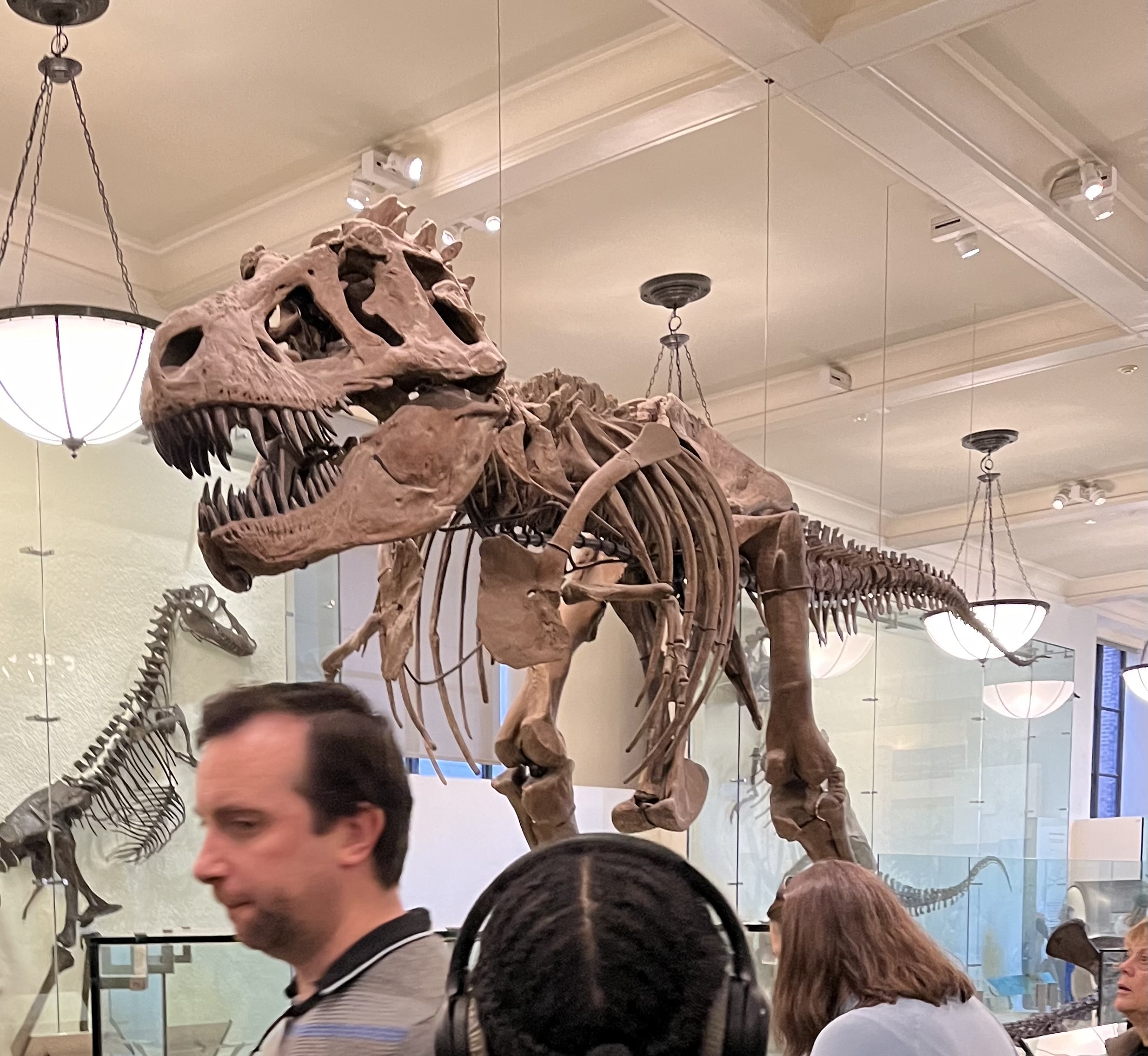Event name: American Museum of Natural History
Event time and place: New York City, New York, November 11, 2023
Dinosaur: During the American Natural History Museum in New York City (11/11/23) Dr.Holtz presented a lecture, located near the titanosaur 4th floor, where he discussed the evolution of dinosaurs-specifically about their changes in size. He also stated that, like trees, if you cut through the ones of a dinosaur, you can figure out how old it was when it died by the rings. Before he discussed their evolution, he defined "what makes a dinosaur a dinosaur." The common ground all dinosaurs share is their "open hip socket" and "fast metabolism." Then there was a split into Saurischians and Ornithischians. Dr.Hotlz pointed out that in the display, the Tyrannosaurus rex and the Allosaurus are placed within close proximity because they look similar, however it is important to note that they are not the same. In fact, the Tyrannosaurus rex is closer to an ostrich than an Allosaurus. Moving two 35-40 feet long dinosaurs would be a difficult change for the museum to make. When you walk in, you see lots of large dinosaurs and the hall is primarily fossils or models of dinosaurs. For example there are to scale models of a baby Stegosaurus as shown in the first image. While the hall is aimed to be as family friendly as possible, I think the focus groups are young adults and kids who have mild interests in dinosaurs. I think that paleontologists would be bothered by the scientific inaccuracies. When there are interactive components, I found it interesting and effective at convey the information as it allowed me to come close to seeing and feeling a real dinosaur bone

Picture of Tyrannosaurus rex. Fun Fact: the skull seen in the Jurassic Park logo was inspired by the T-rex in the museum.

Picture of baby stegosaurus. A fully grown stegosaurus brain size will be smaller than that of a fully grown elephant.
Vertebre: Dr. Merck gave a tour of the Hall of Vertebrae Origins which focused mostly on biological aspects of evolution. In the tour, he discussed how the first fish were all cartilage, however as they evolved, they became to develop a skeleton. He also noted that the bone plates would be lined in a way for them to sharpen themselves. Dr.Merck also pointed to the ostracoderms who did not have any jaws. Similar to how the dinosaurs split into two different types, there are two different types of fish: ray fin and lobe fin. I believe that this hall is more geared towards middle school/high school students since there are terms that are very biology heavy and can be confusing to younger kids. Dr.Merck noted that the turtle and mosasaurus are not related to each other, despite being placed together by the museum. This will be a hard fix as they would have to move two very large objects. When you walk in, you will see lots of fossils and models everywhere, including the ceiling! There was even a model of a watertight egg that provided a visual aid of eggs of amniotes which you could touch and I found it to be effective at conveying the information.
Self guide: I went to the Hall of Ocean Life which portrayed animals, mostly focusing on marine biology. When you walk in and look up, you will see a 94 foot long model of blue whale. A fun fact is that a fully grown blue whale is one of the largest animals on Earth. The hall was mostly on marine life and models of animals that live in sea such as the models of whales, coral reefs, and walruses. The hall isn't too interactive as they have small videos you can play by touching the screen which was effective at conveying information about the animals, but other than that most of the models are behind glass. The hall is target group is everyone! The models are great for kids and parents and the plaques that contain biological aspects of the plants and animals are great for older kids and parents.


